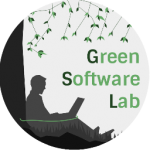Products go Green: Worst-Case Energy Consumption in Software Product Lines -Marco Couto, Rui Pereira, Paulo Borba, Jácome Cunha, João Paulo Fernandes and João Saraiva
The optimization of software to be (more) energy efficient is becoming a major concern for the software industry. Although several techniques have been presented to measure energy consumption for software, none has addressed software product lines (SPLs). Thus, to measure energy consumption of a SPL, the products must be generated and measured individually, which is too costly.
In this paper, we present a technique and a prototype tool to statically estimate the worst case energy consumption for SPL. The goal is to provide software developers with techniques and tools to reason about the energy consumption of all products in a line, without having to produce, run and measure the energy in every combination.
Our technique combines classic static program analysis techniques and worst case execution time prediction with energy consumption analysis. This technique analyses all products in a feature-sensitive manner, that is, a feature used in several products is analyzed only once, while the energy consumption is estimated once per product.
We implemented our technique in a tool called Serapis. We did a preliminary evaluation using a realistic product line for image processing implemented in C. Our experiments considered 7 products from such line and our initial results show that the tool was able to estimate the worst-case energy consumption with a mean error percentage of 9.4% and standard deviation of 6.2% when compared with the energy measured when running the products.

Post a comment